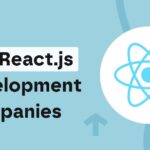Introduction: A Factory Floor Awakening
I still remember the first time I stepped onto a factory floor where AI had already taken root. The hum of machinery was familiar, but there was something different in the air data streams flowing invisibly, sensors quietly communicating, and teams huddled around dashboards instead of clipboards. If you’re exploring a career in IT or simply curious about how artificial intelligence companies are reshaping traditional industries, this story is for you. In this article, I’ll walk you through real lessons from the front line of AI in manufacturing, sharing anecdotes, pitfalls, and successes that feel as human as they are technical.
The Reality of AI in Manufacturing
When someone mentions “AI in manufacturing,” it can sound futuristic or abstract. Yet, behind the buzz, there are plenty of down-to-earth examples of ai startups and established ai companies to invest in that are driving tangible impact. From predictive maintenance to quality control, the journey often starts small a pilot project that grows into a game-changer. In my conversations with engineers and IT leaders, a recurring theme emerges: real-world deployments reveal complexities that no whitepaper fully captures. Let’s explore these implementations and the lessons they offer.
Predictive Maintenance: Avoiding the Unexpected
Story: The Midnight Alert
Picture this: I was on a call with a maintenance manager at a mid-sized plant. They’d recently implemented an AI-driven predictive maintenance solution from an ai startup company specializing in sensor analytics. One night, the system flagged an unusual vibration pattern in a critical compressor. Thanks to the early warning, the team scheduled a quick inspection the next morning avoiding a costly breakdown that could’ve halted production for days.
Key Takeaways:
- Data Quality Matters: Early on, they discovered many legacy machines lacked sufficient sensors. Investing in the right IoT hardware and ensuring clean data streams was non-negotiable.
- Cross-Functional Collaboration: Maintenance teams, data scientists, and IT had to work closely. The data scientists needed domain context; technicians needed to trust the AI alerts. Regular workshops helped bridge gaps.
- Iterative Improvement: The initial AI model had false positives. By collecting feedback from the floor and refining algorithms, they improved accuracy over months rather than expecting perfection on day one.
Quality Control with Computer Vision: The Sharp Eye
Story: The Tiny Defect That Cost Big
In another facility, a well-known artificial intelligence company provided a computer vision system to detect micro-cracks in cast components. Early on, operators were sceptical could a camera really spot what their trained eyes sometimes missed? During the pilot, the AI caught subtle defects at a stage when rework was cheaper. One operator told me, “At first, I thought it was oversensitive, but after we fixed a batch that would’ve slipped through, I became a believer.”
Key Takeaways:
- Human-in-the-Loop: Rather than replacing humans, the system worked alongside inspectors. Operators reviewed AI-flagged parts, providing quick feedback that retrained the model.
- Edge vs. Cloud Balance: For real-time inspection, they deployed edge computing devices on the line, reducing latency. But for model updates and deeper analytics, they leveraged cloud resources striking a balance between responsiveness and scalability.
- Vendor Choice: They evaluated several ai companies, from large incumbents to nimble ai startups. The winning provider offered both domain expertise in manufacturing and a flexible integration approach.
Supply Chain Optimization: Keeping the Flow
Supply chain hiccups have been headline news in recent years. Some top ai companies offer platforms that forecast demand, optimize inventory levels, and adapt to disruptions. I recall a session where supply chain managers described how AI models ingested external signals market trends, seasonal patterns, even social media sentiment to recommend adjustments in procurement. While this goes beyond the factory floor, it directly affects production scheduling.
Key Takeaways:
- Holistic Data Integration: True optimization pulls data from ERP systems, vendor portals, and sometimes public sources. Integrating these silos is often the hardest step.
- Scenario Planning with AI: Instead of static forecasts, the team ran “what-if” simulations what if a key supplier had a delay, or raw material prices spiked? The AI helped prioritize which scenarios to hedge against.
- People and Process: Even with slick dashboards, decisions rested with planners. AI provided suggestions, but human judgment especially when geopolitical factors were involved remained crucial.
Human-Machine Collaboration: Upskilling the Workforce
When factories adopt AI, there’s often anxiety: “Will AI replace me?” From my chats with operators and IT professionals, the narrative shifts when companies invest in upskilling. In one instance, a plant partnered with an ai digital marketing training provider (yes, even areas like marketing have parallels in data literacy!) to run internal workshops on data basics and AI concepts. Operators learned to interpret dashboards; engineers picked up Python snippets to prototype simple analytics. As a result, teams felt empowered rather than threatened.
Key Takeaways:
- Transparent Communication: Leadership shared why AI projects mattered improving safety, reducing repetitive tasks, and creating room for creative problem-solving.
- Training Pathways: Offering modular training online modules, shadowing data teams, hackathons helped staff see a clear career path into roles like data steward or AI liaison.
- Celebrating Wins: When a production line saw a measurable reduction in downtime thanks to predictive alerts, they publicly recognized the cross-functional team behind it. This built trust for future AI initiatives.
Lessons for IT Professionals: Navigating an AI Career
If you’re exploring opportunities with ai startups, seeking roles at top ai companies, or evaluating ai companies to invest in, these manufacturing stories offer broader lessons:
- Focus on Problem-Solution Fit: Instead of chasing “best AI” buzz, look for real pain points unplanned downtime, quality inconsistencies, supply chain bottlenecks and align your skills or investments accordingly.
- Build Domain Knowledge: Whether you’re a data engineer or a product manager, spend time understanding manufacturing processes. Even basic familiarity with shop floor terminology goes a long way in designing impactful solutions.
- Embrace Agile Iterations: Many successful pilots started small proofs of concept on a single machine or line. Learn to deliver quick prototypes, gather feedback, and iterate, rather than aiming for a grand rollout from day one.
- Network Across Industries: Insights from ai in retail or ai digital marketing can spark ideas. For instance, the way recommendation engines personalize online shopping can inspire predictive maintenance prioritization Stay Curious About AI Startups: Many ai startup companies specialize in niche manufacturing areas energy management, robotic vision, supply chain analytics. Track emerging players, attend industry events, and consider partnerships or investment opportunities.
What to Look for in AI Startups and Companies to Invest In
If investing time or capital, here are pointers drawn from manufacturing deployments:
- Proven Pilots in Real Environments: Seek startups with documented case studies showing measurable ROI in manufacturing settings. Anecdotes are good; data-backed results are better.
- Flexible, Modular Solutions: Manufacturing landscapes vary widely. Companies offering modular AI platforms that adapt to different machines or processes tend to gain traction.
- Strong Support for Integration: Look for providers that assist with sensor deployment, data pipeline setup, and change management beyond just selling a model.
- Cross-Industry Expertise: Startups that have worked on ai in retail or ai digital marketing may bring transferable skills like advanced analytics or user behavior modeling—that enrich manufacturing solutions.
- Sustainable Vision: In an era where sustainability matters, AI companies focusing on energy optimization or waste reduction often align with broader corporate goals, making their offerings more compelling.
Looking Beyond Manufacturing: Inspiration from Other Domains
Even if your focus is manufacturing, it helps to glance sideways at ai in retail or ai digital marketing trends. For example, personalization engines in e-commerce teach us about adaptive models; sentiment analysis in marketing underscores the value of unstructured data. I’ve seen teams borrow visualization techniques from digital marketing dashboards to make manufacturing KPIs more accessible. Cross-pollination fuels creativity: don’t silo yourself into one vertical.
Conclusion: Next Steps and Encouragement
Stepping onto the front lines of AI in manufacturing can feel both exhilarating and daunting. From predictive maintenance alerts at midnight to computer vision catching hidden defects, the real-world lessons remind us that technical prowess must marry domain understanding and human collaboration. If you’re an IT professional considering roles at ai startups or top ai companies, start by immersing yourself in manufacturing contexts: visit a plant, talk to operators, and experiment with small prototypes.
Remember, successful AI implementations grow from trust, transparency, and iterative learning. Whether you aim to join an artificial intelligence company focused on factories, advise boards on investments in ai companies to invest in, or build your own AI-driven solution, keep the human element at the center. Embrace curiosity, be ready to learn on the go, and celebrate each win—no matter how small. The factory floor of tomorrow is collaborative, data-driven, and fueled by both technology and people like you.
- Real AI Implementations in Manufacturing
- Discover real-world AI in manufacturing lessons from trailblazing companies, practical tips for IT pros, and insights on AI startups shaping industry’s future.
- ai in manufacturing
Related posts:
 Top 5 Custom Software Development Companies in Edmonton 2025
Top 5 Custom Software Development Companies in Edmonton 2025
 Best ReactJS Development Companies for Scalable Web Apps in 2025
Best ReactJS Development Companies for Scalable Web Apps in 2025
 Find the Best Grocery Delivery App Development Company for Startups
Find the Best Grocery Delivery App Development Company for Startups
 Boost Your Business with These App Development Companies in Kuwait
Boost Your Business with These App Development Companies in Kuwait
 Hire Python Developers: Unlock the Power of Expert Python Development Services
Hire Python Developers: Unlock the Power of Expert Python Development Services
 Future Outlook: How Microsoft Dynamics Partners in New York are Preparing for Industry 4.0
Future Outlook: How Microsoft Dynamics Partners in New York are Preparing for Industry 4.0
 Top Features to Increase User Retention in Mobile Application
Top Features to Increase User Retention in Mobile Application
 Why Vaughan Businesses Are Turning to Managed IT Services in 2025
Why Vaughan Businesses Are Turning to Managed IT Services in 2025







